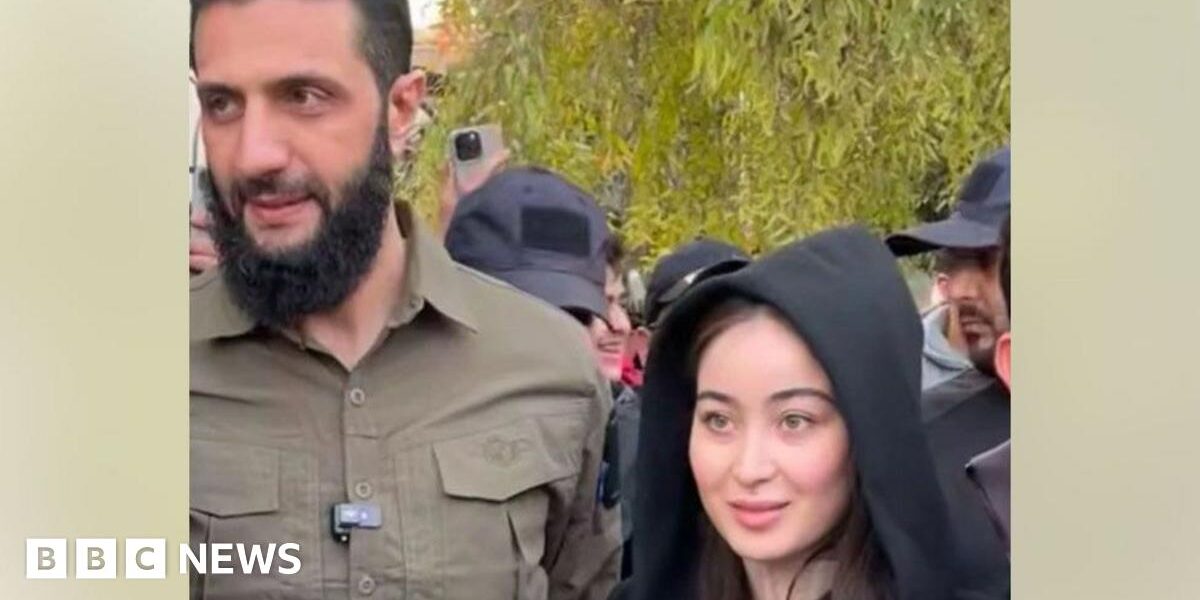Syria’s rebel leader, Ahmed al-Sharaa, has dismissed the online controversy over videos showing him gesturing to a young woman to cover her hair before he posed for a photo with her last week.
The incident sparked criticism from both liberal and conservative commentators amid intense speculation about the county’s future direction after rebels swept to power.
Liberals saw the request from the head of the Sunni Islamist group Hayat Tahrir al-Sham (HTS) as a sign that he might seek to enforce an Islamic system in Syria after leading the overthrow of Bashar al-Assad, while hardline conservatives criticised him for consenting to be photographed with the woman in the first place.
“I did not force her. But it’s my personal freedom. I want photos taken for me the way that suits me,” Sharaa said in an interview with the BBC’s Jeremy Bowen.
The woman, Lea Kheirallah, has also said that she was not bothered by the request.
She said he had asked in “gentle and fatherly way”, and that she thought “the leader has the right to be presented in the way he sees fit”.
However, the incident demonstrated some of the difficulties any future leader of Syria might have in appealing to and uniting such a religiously diverse country.
Sunni Muslims make up the majority of the population, with the remainder split between Christians, Alawites, Druze and Ismailis.
There is also a wide range of views among the various political and armed groups who were opposed to Assad, with some wanting a secular democracy and others wanting governance according to Islamic law.
HTS, a former al-Qaeda affiliate, initially imposed strict behaviour and dress codes rules when it seized control of the former rebel stronghold of Idlib province in 2017. However, it revoked those rules in recent years in response to public criticism.
The Quran, Islam’s holy book, tells Muslims – men and women – to dress modestly.
Male modesty has been interpreted to be covering the area from the navel to the knee – and for women it is generally seen as covering everything except their face, hands and feet when in the presence of men they are not related or married to.





